Stories Category: NICU

Pediatric Critical Care Study Guide: Text and Review
This is the first comprehensive study guide covering all aspects of pediatric critical care medicine. It fills a void that exists in learning resources currently available to pediatric critical care practitioners. The major... read more
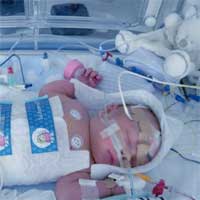
Hypothermia Plus Melatonin in Asphyctic Newborns
The early addition of IV melatonin to asphyctic neonates is feasible and may improve long-term neurodevelopment. To our knowledge, this is the first clinical trial to analyze the administration of IV melatonin as an adjuvant... read more
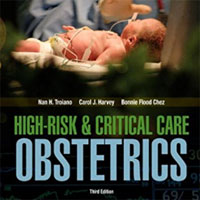
High-Risk & Critical Care Obstetrics
Co-published with the Association of Women's Health, Obstetrics & Neonatal Nurses (AWHONN), this comprehensive book on advanced obstetrics practice focuses on the care of childbearing women with complications during pregnancy... read more
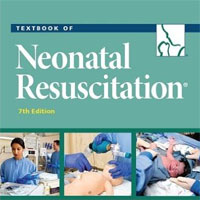
Textbook of Neonatal Resuscitation
#1 Best Seller! New 7th Edition! Powerful resource for interactive, simulation-based teaching and learning! The Neonatal Resuscitation Program (NRP) is an educational program jointly sponsored by the American Academy of... read more
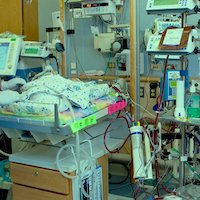
Sedation Practices of Neonates Receiving ECMO
Neonatal sedation practices during extracorporeal membrane oxygenation (ECMO) are not well described and no universal guidelines exist. Current literature describes types of medications used in adult and pediatric ECMO... read more

Transcutaneous CO2 vs. End-tidal CO2 in Neonates and Infants Undergoing Surgery
EtCO2 underestimates PvCO2 values in neonates and infants under general anesthesia. TcPCO2 closely approximates venous blood gas values, in both the NICU and non-NICU samples. We, therefore, conclude that tcPCO2 is a more... read more
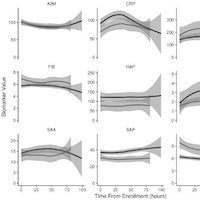
Combined Biomarkers Predict Acute Mortality Among Critically Ill Patients With Suspected Sepsis
Combined biomarkers predict risk for 14-day and total mortality among subjects with suspected sepsis. Serum amyloid P and tissue plasminogen activator demonstrated the best discriminatory ability in this cohort. Fourteen-day... read more

Against the Odds – When Statistics Fail the Patient
Do you want to cut the cord? the nurse asked. I watched my husband pick up the scissors, his hand trembling as he cautiously severed the lifeline that once connected our daughter, Anika, to me. The nurse wrapped her in a... read more

The combination of procalcitonin and C-reactive protein or presepsin alone improves the accuracy of diagnosis of neonatal sepsis
The combination of PCT and CRP or presepsin alone improves the accuracy of diagnosis of neonatal sepsis. However, further studies are required to confirm these findings. A total of 28 studies enrolling 2661 patients were... read more

Neonatal and Pediatric Respiratory Care
A comprehensive text on respiratory care for neonates, infants, and children, Neonatal and Pediatric Respiratory Care, 4th Edition provides a solid foundation in the assessment and treatment of respiratory care disorders.... read more

Using music to stabilize NICU babies as well as their parents
When music therapist Christine Vaskas works with babies in the neonatal intensive care unit, the effect of her interventions are almost always immediately apparent. In 2013, a study led by Joanne Loewy, the Armstrong Center's... read more
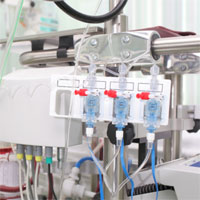
Start a Neonatal ECMO Program: A Multistep Team Training
The multistep extracorporeal membrane oxygenation (ECMO) team training increased staff' knowledge, technical skills, teamwork, and self-confidence, allowing the successful development of a neonatal respiratory ECMO program.... read more
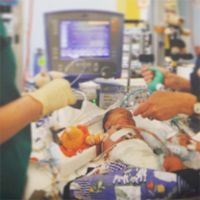
Association Between Fluid Balance and Outcomes in Critically Ill Children
Fluid overload is common and is associated with substantial morbidity and mortality in critically ill children. Additional research should now ideally focus on interventions aimed to mitigate the potential for harm associated... read more
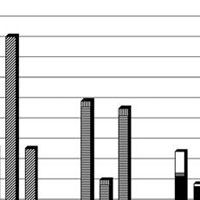
Neural Breathing Pattern and Patient-Ventilator Interaction During Neurally Adjusted Ventilatory Assist and Conventional Ventilation in Newborns
Patient-ventilator interaction appears to be improved with neurally adjusted ventilatory assist. Analysis of the neural breathing pattern revealed a reduction in central apnea during neurally adjusted ventilatory assist use.... read more




